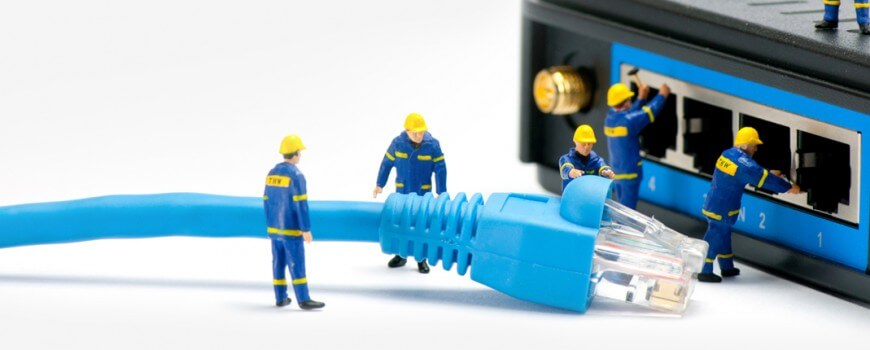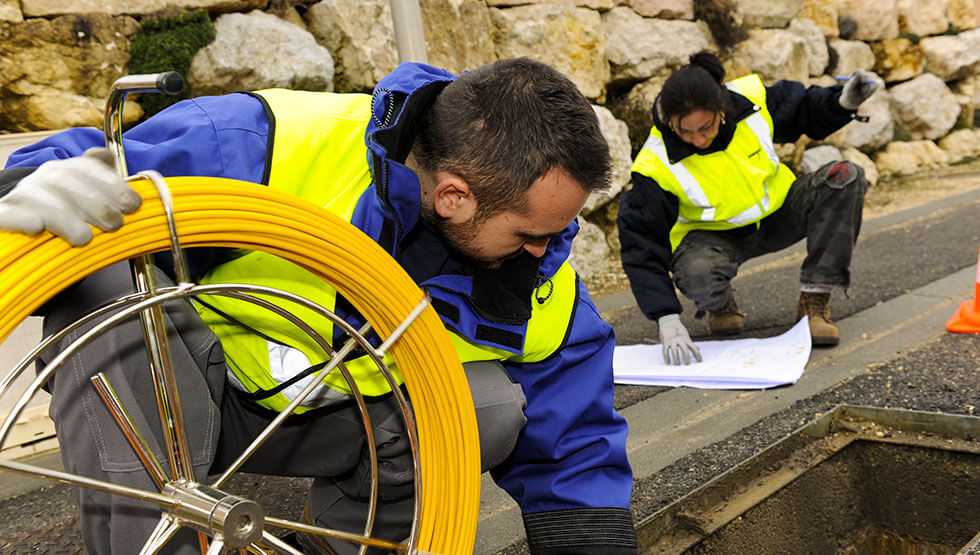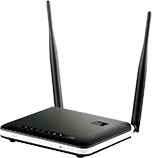What nbn’s new FTTP NTD and 2,000 Mbps (2Gbps) plans mean for small businesses
nbn has announced two big changes are coming to Australia’s fixed-line broadband:
The first is the introduction of a new “Hyperfast” NBN 2000 speed tier (2,000 Mbps), and the second is nbn’s next-generation Network Termination Devices (NTDs) for its Fibre to the Premises (FTTP) footprint to support this new “Hyperfast” speed tier (2,000 Mbps).
For small businesses — many of which are increasingly digital-first — these changes can deliver huge benefits, but they also bring a few practical considerations. Here’s a plain-English breakdown of what to expect and how to prepare.

What’s changing: the NTD and the 2Gbps tier
An NTD (also called the ‘nbn box’) is the piece of kit on the wall that terminates the fibre coming into your premise and hands off an Ethernet connection to your router — essentially the modem for FTTP premises. nbn is introducing a next-generation FTTP NTD designed to handle multi-gigabit speeds and simpler device setup. There are two new FTTP NTD or nbn box models with a smaller, higher-capacity single-port unit, which is expected to be the default option and a multi-port model, similar to the nbn boxes installed in premises as of August 2025; however, these new NTDs are capable of supporting 2.5 Gbps and higher Ethernet port speeds.
The accompanying wholesale product is the nbn “Hyperfast” / NBN 2000 tier — retail plans that can deliver up to 2,000 Mbps download (with upload variants dependent on technology). The announced commercial rollouts and wider speed upgrades are scheduled to take effect from mid-September 2025. Retail ISPs, like innoTel, will package and price these for business and consumer customers.
Why this matters to small businesses
- Capacity for growth and cloud services. 2 Gbps gives a small office the headroom to run multiple cloud backups, large file transfers, simultaneous video conferences, VoIP systems, and customer-facing services without contention. If your business uses cloud-first apps (file servers, backup, CRMs, hosted phones), the extra throughput reduces delays and improves reliability during peak times.
- Better upload performance (important for backups and server hosting). While download headlines grab attention, many businesses will see improvements to upload performance as the product variants include higher upload profiles on FTTP — vital for offsite backups, video uploads and running any outgoing services. nbnco.com.au
- Future-proofing and multi-site needs. If you run branches or heavy-use office spaces (POS systems, guest Wi-Fi, CCTV cloud upload), moving to a multi-gigabit capable kit today reduces the need for costly upgrades later.
- Improved device compatibility and management. The new NTDs are being positioned to simplify device setup and support modern router features — this can make IT management easier for small businesses without dedicated networking teams.
Practical considerations before you switch
- Check your connection type. NBN 2000 and the new NTDs are available for FTTP (and some HFC) premises. If you’re on FTTN/FTTC/Fixed Wireless, you may not be eligible unless you move to FTTP. Confirm your technology with your ISP or nbn.
- You’ll probably need new hardware. A standard Gigabit-Ethernet router or older single-gig ports will bottleneck a 2Gbps service. To make the most of the speed you’ll need:
- a router and switch with multi-gigabit ports (2.5G/5G/10G where required), and
- Wi-Fi 6 (or newer) access points if you want high wireless throughput for laptops and devices. Many businesses will also need a capable firewall appliance to manage security at higher throughput.
- Cabling and internal network checks. Internal Cat5e cabling may limit gigabit performance; upgrading to Cat6 (or Cat6A for 10G), where possible may be necessary for multi-gig speeds.
- Cost vs benefit. While the Hyperfast plans haven’t been released by providers yet, we expect them to be exceptionally good value for a 2Gbps service — good value for certain businesses, but it may be overkill for operations that don’t move large volumes of data. Many businesses will find that NBN 500–750 plans provide excellent value for everyday needs.
Security and backup — don’t neglect them
Higher bandwidth is not the same as higher resilience. Make sure you:
- Implement firewall and endpoint protections (multi-layer security scales with your speed), and
- Consider a secondary internet link for failover if uptime is critical (4G/5G or a second ISP).
How to decide if you should upgrade
- Upgrade if your business regularly transfers large media files, hosts services, runs heavy cloud backups during business hours, or supports many simultaneous users on resource-heavy apps.
- Hold off if your needs are mainly email, light web browsing, and cloud apps with modest sync periods — a cheaper mid-tier upgrade may be more cost-effective.
Next steps (quick checklist)
- Check your nbn technology (FTTP/HFC?) with nbn.
- Check to make sure your router can handle the new speed tier (hint: most basic routers only have 1G Ethernet ports!).
- Get quotes for any required hardware upgrades.
- Order an upgrade or new service with innoTel.
Don’t have the time? innoTel can run a short, no-obligation network audit to check whether your premises are eligible for NBN 2000, highlight hardware bottlenecks, and cost out a staged upgrade plan that balances speed and budget. Contact us to book a free consultation and make sure your business is ready for multi-gigabit internet.
Image credit: NBN Co Ltd
‘nbn’ is a registered trade marks of NBN Co Ltd



